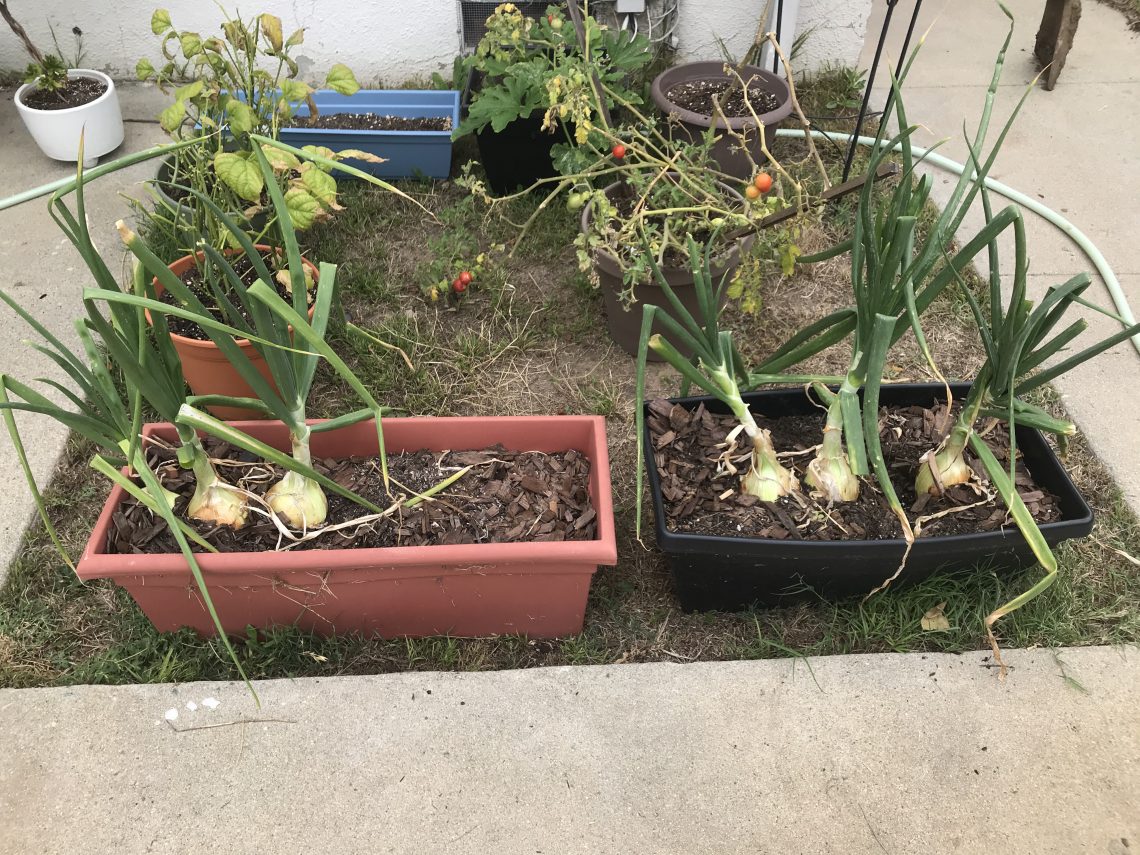
How to Grow Onions
What gardener wouldn’t want a staple cooking vegetable like onions growing? It may come as a surprise that it doesn’t take a lot of effort to grow these orbs.
Onions typically prefer growing in cooler temperatures in the early stages of their development. It is best to plant onions in late March – April. Those onions should be ready for harvest by midsummer. Nurseries don’t typically sell onion seedlings during the summer because young onion seedlings don’t prosper too well in hot temperatures. But you can still try to plant onion packet seeds in the summer and with some luck it should still grow.
Your other alternative is to plant them in Fall where the temperature is cooler. Make sure they have at least 4 to 6 weeks of warm temperatures when you first plant the onion seedlings, usually around September or Early October. However, be mindful of where you are regionally. Planting onions in Zones 5 and below during Fall will not foster any growth until early spring. In Zones 6 and above, you’ll see some growth during the Fall season, but they’ll most likely go through a dormant period in the winter and won’t be ready to harvest until early Spring.
There are many varieties of onion that grow best in certain climates. You can do some research on the best variety of onion for your particular area, but here is the skinny on three basic onion types: long-day, day-neutral, and short-day onions.
Long-day onions – These types of onions thrive in Zones 6 and below. They require about 14 to 16 hours sunlight and bulbs will start to form after the summer equinox. These onions are best planted in early spring, but can be planted in fall as well.
Neutral-day/ Intermediate onions – These onions can typically grow in any zone, but grow best in zones 5 and 6. They require around 12-14 hours of sunlight, and can be planted in fall or early spring.
Short-day onions – They are reserved for warmer climates and in Zones 7 and above. Required sunlight is only about 10-12 hours. Due to mild fall/winter, they can be planted in late fall or winter.
It is usually recommended to buy onions as seedlings. I have bought them from seed packets too, and they have started growing recently, but only a couple of them actually sprouted. I suggest just getting the seedlings since you are guaranteed a higher success rate, plus you’re cutting out MONTHS of growth time.
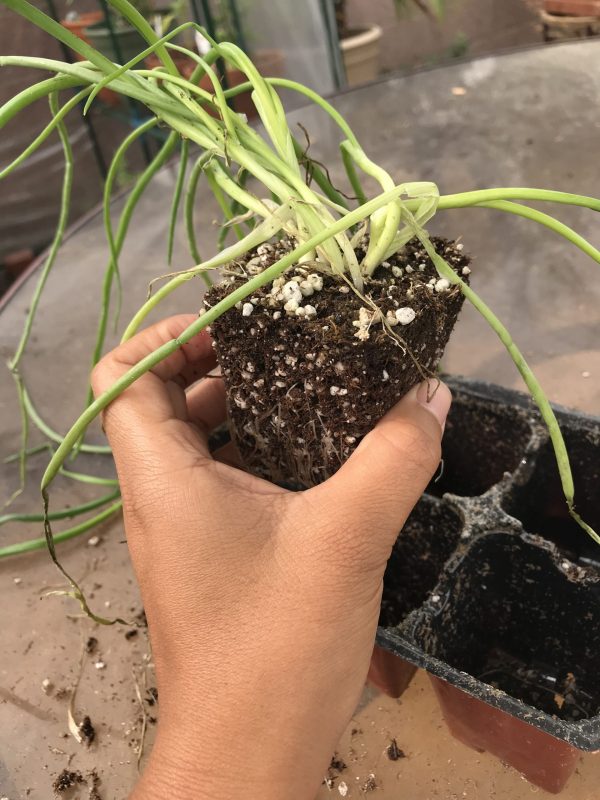
Onions need loose, well-drained soil. If your garden has clay soil it will grow poorly. Growing onions in containers or raised beds guarantees adequate drainage. I’ve planted my onions in containers with regular potting soil.
Onion seedlings will usually come in bunches, but you have to separate them into individual stalks before you plant them in the ground. Dig a 2 inch hole and place the individual stalk in. Plant 4-5 inches apart so the bulb will have room to grow. If planting in containers make sure the pot is at least 8 inches deep.
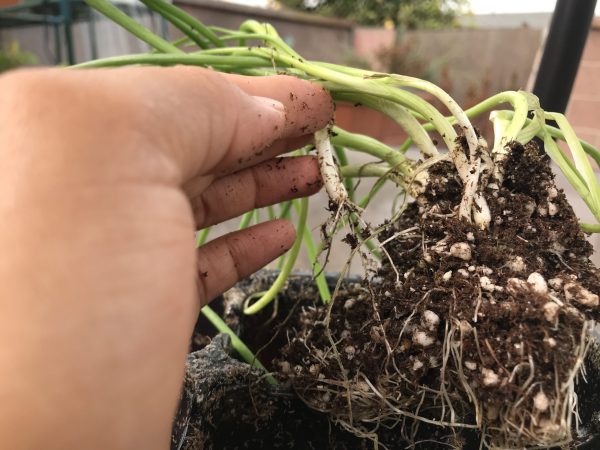
For excess onion seedlings: try to plant as many as you can, but if you don’t have enough room put the seedling bunches in a container and continue to nurse them like you would have otherwise. You never know, they could still potentially bulb later!
Onions will take on average about 3 ½ months, or around 100 days, to reach full maturity. But it’s easy to get dismayed within the first couple months when you don’t see an actual onion forming. Here is the progression of my tiny onion farm:

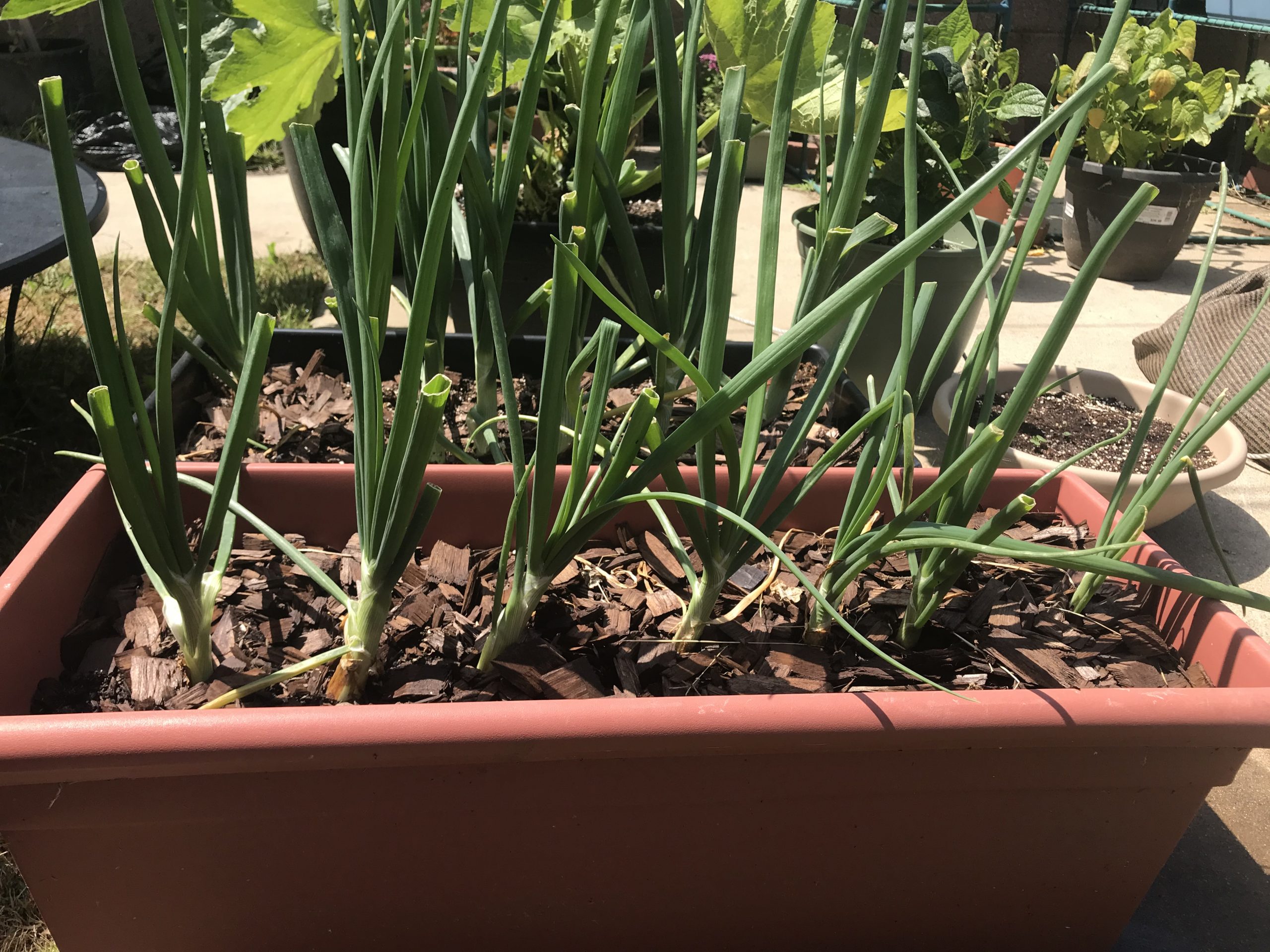 May 27
May 27
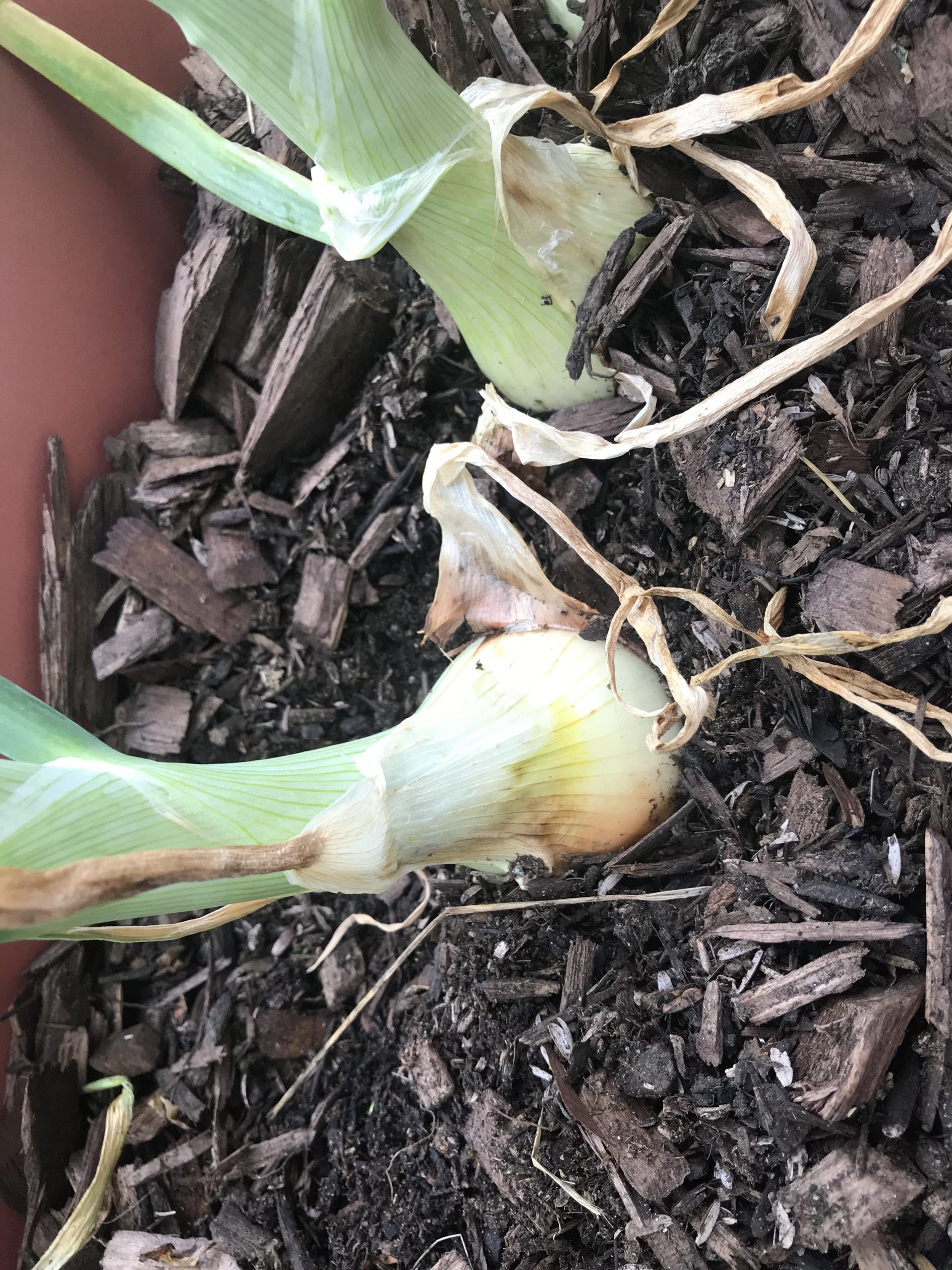 June 19
June 19
After two months the green tips adding a second skin and getting super tall. By this time I applied mulch and compost to the containers. What discouraged me was after all this time I never saw them bulb, and I truly believed I was only growing scallions.
In the middle of June (almost three months since I planted them) I moved some dirt around the green stalks and to my surprise was a hefty bulb forming. My faith was restored and I unearthed my first onion. It was absolutely glorious.
Once you see the bulb come out the ground, do not put soil back over them. They need to emerge out of the soil to keep growing. Also, if you have been adding compost or any kind fertilizer to your onions periodically, you can stop once you start to see bulbs forming.
They will tell you they are done growing once their green stalks develop brown tips and limp over. Once that happens pull them out, or they will just start to rot from this point.
Onions will also tell you they have done growing once you see them develop a flowing stalk. It’s the hard stem that grows from the middle with the green, garlic-looking tip. You’d want to pull them out at this point, keeping them in the dirt longer after that bolted will result in bitter flavor. And yes, they’ll bolt even if the bulb have barely formed. Premature bolting usually occurs due to stress, and it’ll go into panic mode and set out it’s seeds to reproduce before it perishes. Your best bet to prevent early bolting is make sure the onions are well-watered, especially during heat waves/dry spells.
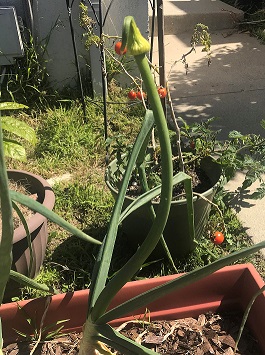
Once you take out the onions place them somewhere to dry for about 1-3 weeks, preferably when the weather will be consistently warm and sunny. Once the outer skins have dried you can take them inside. This will help extend the life of the onion. Proceed to remove the tops and clean off the onion. Keep them stored at room temperature and they’ll last for about 2-3 months.
So again, onions are pretty easy to grow. Just have a little patience and sooner or later they’ll become your best friend, especially if you make a mirepoix on the regular!


One Comment
Danny
Looks easy enough! Great info! 🙂